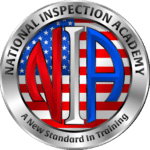NACE (National Association of Corrosion Engineers) coating inspections ensure the longevity and durability of structures and equipment. Coatings are applied to surfaces to protect them from corrosion.
What are NACE Coating Inspections?
Purpose:
- To ensure that protective coatings are applied correctly.
- To verify that coatings meet the required standards.
- To prevent corrosion and extend the life of structures and equipment.
Inspector’s Role:
- A NACE-certified inspector checks the coating process from start to finish.
- They use various tools and methods to assess the quality and effectiveness of the coating.
Coating Inspections are Important
- Preventing Corrosion: Properly applied coatings protect metal structures from rust and decay.
- Safety: Ensures that structures, such as bridges, pipelines, and tanks, remain safe and functional.
- Cost Savings: Reduces the need for expensive repairs or replacements due to corrosion damage.
- Compliance: Helps companies meet industry standards and regulations.
Key Steps in NACE Coating Inspections
Surface Preparation Inspection:
- Before applying the coating, the surface must be properly cleaned and prepared. This might involve removing rust, old paint, or other contaminants.
- Inspectors check the cleanliness and profile (texture) of the surface.
Environmental Conditions:
- Inspectors measure temperature, humidity, and dew point to ensure conditions are suitable for coating application.
Coating Application:
- They monitor the application process, ensuring the correct thickness and evenness of the coating.
- This involves checking for uniform coverage without bubbles, blisters, or other defects.
Curing and Drying:
- Inspectors verify that the coating is allowed to cure (harden) properly, which is crucial for its protective properties.
- After the coating has cured, a final inspection ensures that the coating meets all specified standards.


